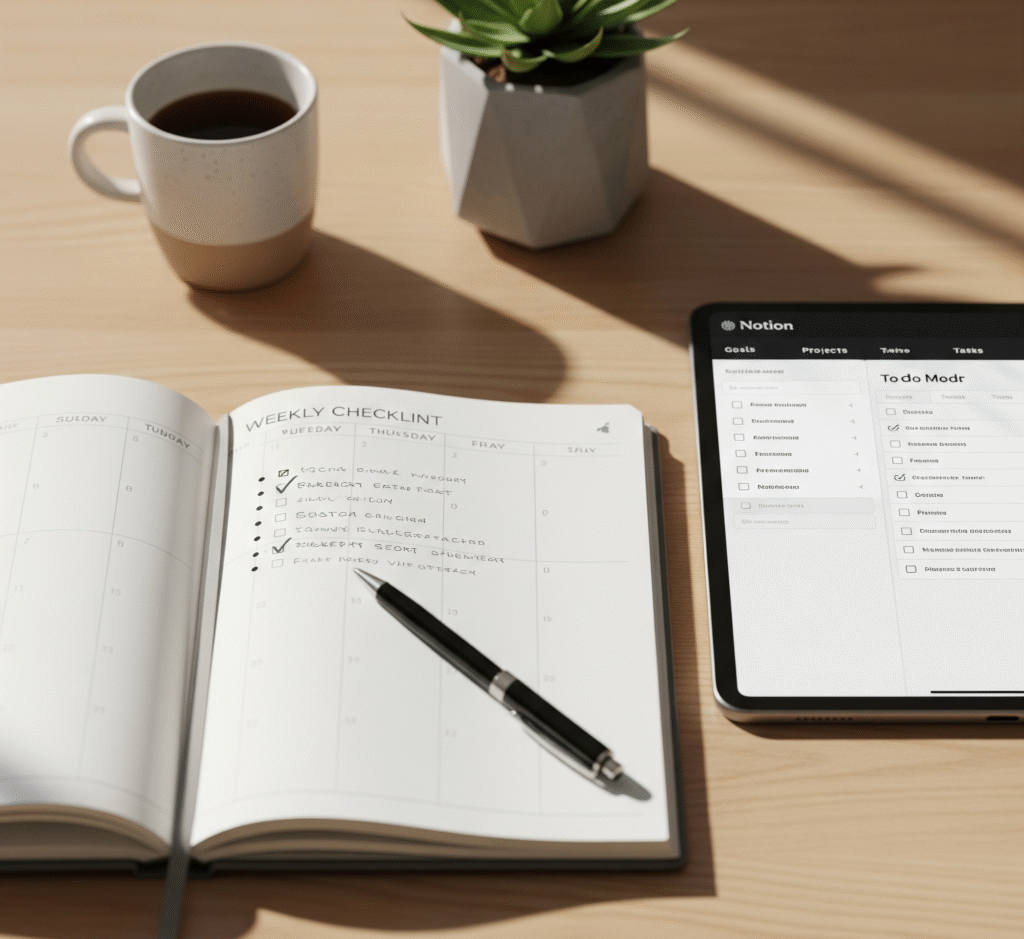learn without overwhelm
Have you ever sat down with the best of intentions to learn something new—only to feel completely paralyzed by the sheer amount of information out there? Maybe you bought a course, downloaded a few e-books, or bookmarked an entire YouTube playlist. Instead of feeling motivated, you felt stuck.
I’ve been there too. At one point, I had three different note-taking apps open, stacks of books piling up, and a queue of podcasts that could last me through an apocalypse. I didn’t feel like a curious learner—I felt like a stressed-out archivist.
Here’s the truth: learning doesn’t have to feel overwhelming. With the right mindset and structure, you can create a calm, clear, and sustainable learning process that actually sticks. In this article, we’ll explore exactly how to do that—without the noise, without the guilt, and definitely without the burnout.
Why Learning Feels Overwhelming

Learning is natural, but the way we approach it in the digital age often makes it stressful.
- Too many options. Courses, podcasts, books, blogs—it feels endless.
- No clear roadmap. You don’t know what to prioritize or where to begin.
- Perfectionism. You feel like you have to master everything right away.
- Information overload. Instead of clarity, you end up with confusion.
I used to think the solution was “just work harder.” But when I tried that, I found myself exhausted instead of enlightened. That’s when I realized: the real skill isn’t learning faster, it’s learning with less noise.
Step 1: Redefine What “Learning” Means
When you think of learning, you might picture endless flashcards, late-night reading marathons, or consuming every resource you can find. But that’s not real learning—it’s cramming.
The Shift in Perspective
- Learning is not collecting. Saving articles doesn’t mean you’ve learned.
- Learning is not memorizing. Knowing definitions by heart is not the same as understanding.
- Learning is connecting. True learning happens when you connect ideas to your life, work, or creative projects.
Key takeaway: Learning isn’t about hoarding information. It’s about applying the right knowledge at the right time.
Step 2: Create a Gentle Learning Framework

Overwhelm happens when learning feels endless and unstructured. A simple framework helps you stay grounded.
The 3-Part Framework
- Set a clear intention. Ask: Why do I want to learn this?
- Choose a focused path. One book, one course, one mentor—not five.
- Reflect and apply. Write, teach, or use what you learned immediately.
I use a digital journal to reflect after each session. Sometimes it’s just a sentence like: “This idea about simplifying systems makes me rethink how I use my calendar.” That tiny reflection is often worth more than 20 highlighted pages.
Key takeaway: A simple structure brings calm and prevents the “too much at once” spiral.
Step 3: Start Small and Stay Consistent
Here’s the secret nobody likes to hear: consistency beats intensity every single time.
- Read for 15 minutes instead of cramming three hours.
- Watch one lesson per week instead of binge-watching an entire course.
- Write a short reflection instead of stressing over perfect notes.
When I tried to force myself into “study sprints,” I’d burn out quickly. But when I shifted to small, steady sessions, I built a rhythm. And rhythm creates momentum.
Key takeaway: Small steps create sustainable learning. Overwhelm comes from trying to leap instead of walking.
Step 4: Use Tools That Reduce Mental Clutter

Sometimes, overwhelm comes from how we organize (or don’t organize) what we’re learning. Thankfully, there are tools that help.
Recommended Tools
- Notion – A clean, flexible space for organizing notes and ideas.
- Readwise – Collects highlights from books and articles so you don’t lose track of insights.
- Evernote – Great for quick captures and structured notebooks.
I personally use Notion for my “Learning Dashboard.” It’s simple: one page with my current focus, key takeaways, and next steps. No fancy templates, just clarity.
Key takeaway: Tools should simplify, not complicate. Choose one system and stick to it.
Step 5: Apply What You Learn Immediately
Knowledge fades fast if you don’t use it. Applying what you learn is the best antidote to overwhelm.
Ways to Apply Quickly
- Teach it. Explain a concept to a friend or colleague.
- Practice it. Try it in a small project or daily task.
- Write it. Summarize in your own words in a journal or blog.
When I learned about spaced repetition, I didn’t just read about it. I applied it by reviewing my notes weekly. Suddenly, the concept wasn’t just “interesting”—it was alive in my routine.
Key takeaway: Learning sticks when it leaves your notebook and enters your life.
Step 6: Embrace the Power of Pauses

Here’s a paradox: doing less often helps you learn more.
Pauses—whether they’re breaks between study sessions, daily walks, or time away from screens—are where ideas sink in. Neuroscience even backs this up: your brain consolidates memories during rest.
For me, some of my clearest insights came not while reading, but while brewing coffee or walking outside.
Key takeaway: Rest is not wasted time. It’s the soil where your learning takes root.
Step 7: Let Go of the Guilt
One of the biggest sources of overwhelm isn’t the content—it’s the guilt. The “I should be further ahead” narrative.
Here’s the truth: learning has no finish line. You don’t have to master everything, and you don’t have to keep up with every new trend. The fact that you’re committed to growth already sets you apart.
Key takeaway: Progress is better than perfection. Guilt is a terrible teacher—curiosity is a better one.
Conclusion
Learning doesn’t have to feel like a race against time or a battle against your to-do list. With the right perspective and simple frameworks, you can transform learning into a calm, motivating, and joyful practice.
- Redefine learning as connection, not collection.
- Use a gentle framework to stay focused.
- Start small and stay consistent.
- Choose tools that simplify.
- Apply what you learn immediately.
- Rest often, guilt less.
If you’re ready to bring more clarity to your learning journey, I highly recommend setting up a simple system in Notion to track what matters. It’s been one of the best steps I’ve taken to learn without overwhelm.
Here’s my gentle invitation: take one idea from this article, apply it today, and let it grow. Because learning, at its best, isn’t about more—it’s about meaning.





